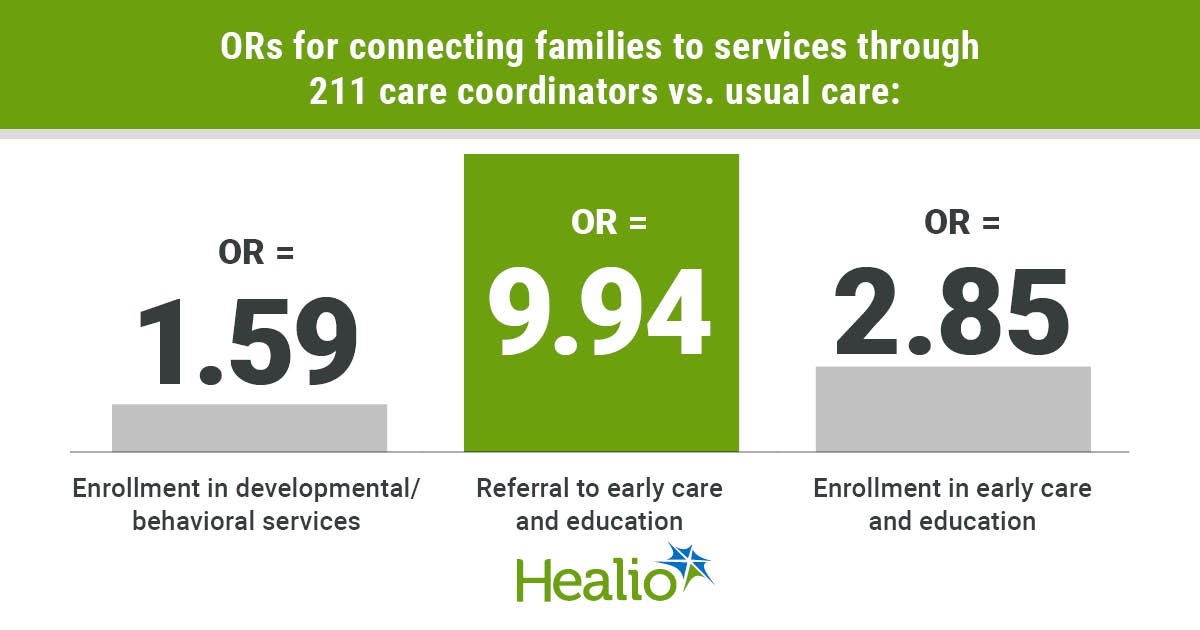September 08, 2025
3 min read
Key takeaways:
- Using a model that factored in changes in age, sex and BMI, researchers found an expected 34.7% relative rise in mild OSA prevalence from 2020 to 2050.
- Projected increases in OSA are greater among women.
The prevalence of mild, moderate and severe obstructive sleep apnea in U.S. adults are each expected to rise by 2050, according to results published in The Lancet Respiratory Medicine.
“By projecting a rise in OSA prevalence, the research helps fill a critical gap in public health planning and ensures that health systems, payers and policymakers can prepare for rising demand,” Carlos M. Nunez, MD, chief medical officer at Resmed, told Healio.

“The findings underscore the urgent need for earlier diagnosis, scalable screening approaches and expanded care infrastructure, particularly for aging and female populations,” Nunez said. “Ultimately, the study highlights OSA as a major public health challenge that requires proactive strategies to help improve long-term outcomes.”
In a prospective modelling study, Nunez and colleagues assessed data from a U.S. 30-year longitudinal sleep cohort study to determine how OSA prevalence is expected to shift from 2020 to 2050.
“This first-of-its-kind study was prompted by the urgent need to understand how the prevalence of OSA will evolve in the U.S. from 2020 to 2050,” Nunez said.
Using an open cohort dynamic population simulation model that factored in changes in age, sex and BMI, researchers found an expected 34.7% relative rise in mild OSA (apnea-hypopnea index [AHI] ≥ 5 events/hour) prevalence by 2050 (2020, 34.3%; 2050, 46.2%). This means 76.6 million U.S. adults aged 30 to 69 years in the U.S. will have mild OSA.
In terms of more severe OSA, the study reported a 37.3% expected relative rise in moderate OSA (AHI ≥ 15 events/hour) by 2050 (2020, 23.3%; 2050, 32%) and a 44.1% expected relative rise in severe OSA (AHI ≥ 30 events/hour) by 2050 (2020, 11.8%; 2050, 17%). These projections signal that 52.9 million adults will have moderate OSA and 28.1 million adults will have severe OSA by 2050.
Researchers also observed that both men and women are projected to have relative increases in prevalences of each OSA severity category from 2020 to 2050, but the rises among women are greater (mild, 65.4% vs. 19.3%; moderate, 67.5% vs. 21.5%; severe, 75.3% vs. 27.7%).
Among women, the study highlighted that the 22.8% with mild OSA in 2020 is expected to rise to 37.7% in 2050, totaling 30.4 million cases, whereas among men, the 45.6% with mild OSA in 2020 is expected to rise to 54.4% in 2050, totaling 45.9 million cases.
“We were surprised by the 65% relative increase in OSA prevalence among women, reaching 30.4 million by 2050,” Nunez told Healio. “The sharp rise, attributed to factors like an aging population and underdiagnosis [reported by Bouloukaki and colleagues], underscores the need for greater awareness of how OSA presents differently in women to support earlier screening, diagnosis and targeted treatment.”
In an effort to see how GLP-1 use will impact OSA prevalence by 2050, researchers accounted for GLP-1s and found an expected 29.7% relative rise in mild OSA (2020, 34.3%; 2050, 44.5%). This means 73.7 million U.S. adults with have mild OSA by 2050, which is only around 4% less than the projected 76.6 million adults when not accounting for GLP-1s, according to a Resmed press release.
A small difference in projected OSA prevalence by 2050 with vs. without GLP-1s was also reported when evaluating moderate and severe OSA, according to the study.
Researchers continued to find greater projected relative increases in the prevalence of each OSA severity category from 2020 to 2050 among women vs. men when accounting for GLP-1s.
“For everyday clinicians, the projected rise in OSA prevalence suggests they should expect to see more patients at risk for OSA and prepare for increasing demand for screening and diagnosis,” Nunez told Healio.
“The projected rise, combined with underdiagnosis, makes a strong case for including sleep health in routine preventive care — especially for women, older adults and patients with chronic conditions like hypertension or diabetes,” he continued.
According to Nunez, there are several ways to take action now including “equipping care teams with validated screening tools such as the Epworth Sleepiness Scale, expanding access to home sleep testing and developing care plans that support patients beyond diagnosis.”
Nunez also told Healio there are still needs for early intervention, sex-specific OSA screening tools and treatment plans that reflect the full spectrum of patient needs.
“This study should be a wake-up call: untreated sleep apnea is poised to be among America’s fastest-growing and most costly chronic health burden,” Nunez said. “Without immediate action to expand screening, streamline diagnosis and ensure affordable treatment, health systems could face avoidable costs, and patients could face preventable complications.
“Early intervention is not just good health care, it’s smart policy,” he said.
References:
For more information:
Carlos M. Nunez, MD, can be reached at pulmonology@healio.com.











